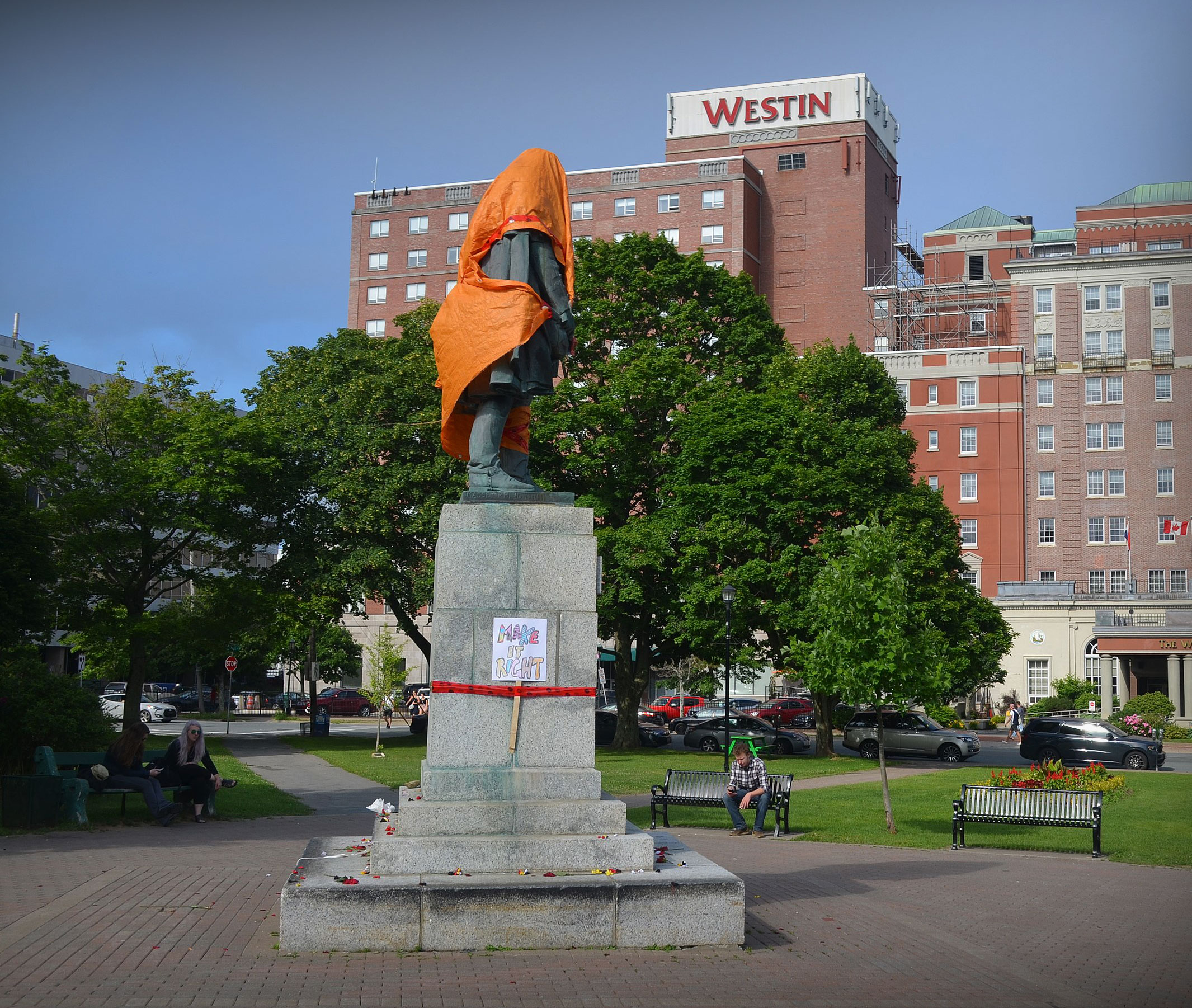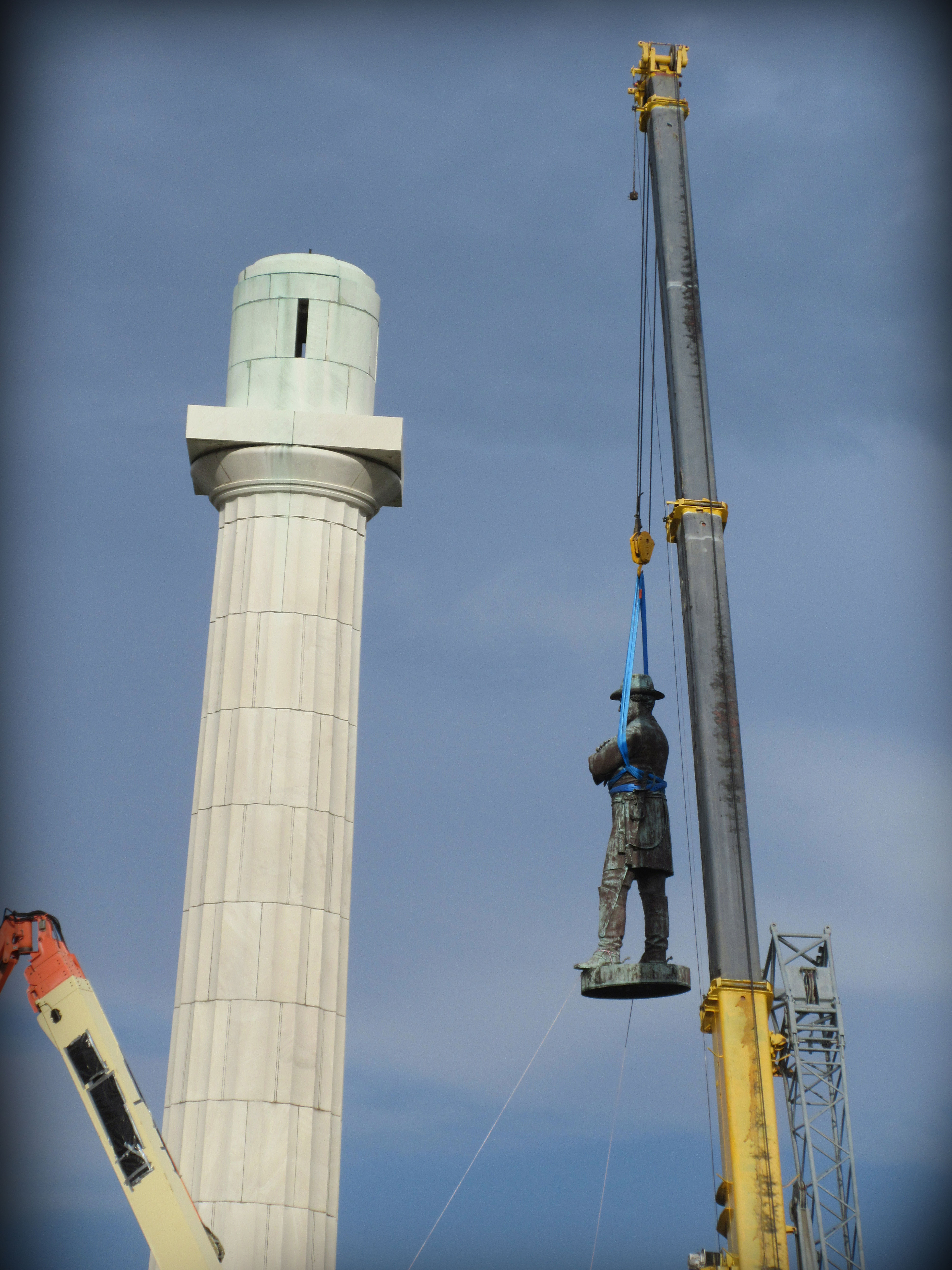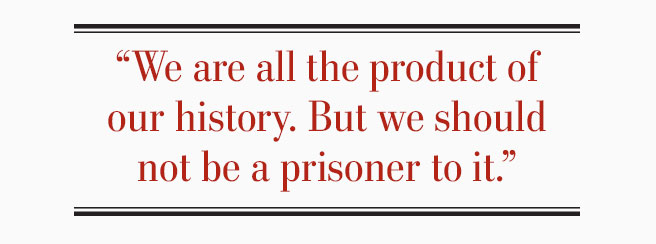
But victors tend to omit certain inconvenient truths.
History, especially war history, can be absolutely wrong, or sometimes wrongly reinterpreted. Perspectives, after all, change with time, discovery and evolving social mores. What is deemed true in the afterglow of victory may later be tarnished in the sobering light of reality.
Historical revisionism has been at the forefront of public discourse since city councils and state legislatures south of the border began voting to remove Confederate statues from public spaces two years ago.
By the start of this year, more than 25 American cities, from Los Angeles to New York, had removed or relocated Confederate iconography amid continuing debates over race and history. At least a dozen other cities were talking about following suit.
The wave of revisionism seemed a harbinger for re-evaluations and reckonings in numerous jurisdictions over a range of historical issues, from Polish interpretations of the Holocaust and Japanese disavowals of war atrocities to iconography.
In Halifax, work crews recently removed an 86-year-old statue of the city’s founder, Edward Cornwallis, from a public park after protests over the fact that as Nova Scotia governor he had offered a bounty for Mi’kmaq fighters taken prisoner, or their scalps, in 1749.

‘Revisionism’ can seem like a bad word. It can conjure up images of Stalinist-style rewriting of history or of societal pandering to the whims of political correctness.
But H.V. (Viv) Nelles, a retired history professor and former director of McMaster University’s Wilson Institute for Canadian History, says re-evaluation of history is a natural, necessary and continuous process. It is like the air around us, he says.
“It’s what helps us live; it’s what helps us understand our past,” says Nelles, who has written extensively on the subject of statuary. “As we go forward in time, we have new questions, new concerns, new morality, new understandings of things.
“There is new evidence and new ways of looking at things. And as a result, our past keeps changing.”
However, people tend to view the past as fixed. “The truth of it is, the past is a little bit like a mountain—as you move around it with a different perspective, a different point of view, it changes its shape and your understanding of it changes.”
In the 11 secessionist states of the American South, it wasn’t the winners but the losers of the U.S. Civil War who for 150 years wrote the narrative perpetuating Confederate myths of nobility, prosperity and self-reliance.
Instead of celebrating the emancipation of an entire race and the saving of the republic, they romanticized an Old South built on bondage and servitude, elevating those who fought to preserve it and misrepresenting many of their ideals.
Groups such as the United Daughters of the Confederacy, founded a quarter-century after the war ended, launched campaigns to celebrate and commemorate the likes and likenesses of generals Robert E. Lee and Stonewall Jackson and secessionist president Jefferson Davis—traitors who fought against the United States, not for it.

They were part of a movement known as The Cult of the Lost Cause. Its one and only goal, said New Orleans Mayor Mitch Landrieu, was to “rewrite history to hide the truth, which is that the Confederacy was on the wrong side of humanity.”
Lee himself resisted the idea of statues, saying at hostilities’ end they would only serve to “keep open the sores of war.” Most Confederate memorials were erected during the segregation era between the 1890s and 1950s, well after Lee died.
“Lee feared that these reminders of the past would preserve fierce passions for the future,” historian Jonathan Horn wrote for CNN in 2016. “Such emotions threatened his vision for speedy reconciliation. As he saw it, bridging a divided country justified abridging history in places.”

Statues are often among the casualties of revolution. Images of Saddam Hussein’s bronze figure toppling into the celebratory streets of Baghdad and busts of Josef Stalin falling all over Eastern Europe as communism collapsed still resonate.
“Whole brigades of bronze monarchs were de-horsed during the French Revolution, while the iconoclasm of the Protestant Reformation defaced and dismembered stone saints by the score,” Saint Mary’s University anthropologist Jonathan Fowler wrote in The Globe and Mail. “There is something in a statue that can get people’s blood up.”
Monuments, Fowler noted, “reinforce allegiances, articulate civic virtues and promote favoured historical narratives.”
So it was with many of the Confederate statues, erected as they were by white supremacists and imparting a singular message. Landrieu noted there is a difference between remembrance of history and reverence of it.
“These statues are not just stone and metal,” the mayor declared in a speech in August that many consider a watershed moment in the debate. “They are not just innocent remembrances of a benign history. These monuments purposefully celebrate a fictional, sanitized Confederacy; ignoring the death, ignoring the enslavement, and the terror that it actually stood for.”
They were, he added, “a part of that terrorism as much as a burning cross on someone’s lawn; they were erected purposefully to send a strong message to all who walked in their shadows about who was still in charge in this city.”
The monuments debate took root in South Carolina, where the Confederate flag was removed from the statehouse grounds after white supremacist Dylann Roof murdered nine African-Americans in Charleston three years ago. Roof had famously posted a picture of himself with the rebel flag on his social media page before entering a church, taking a seat and eventually opening fire.
The removal of such a revered symbol sparked a nationwide debate, stirred up public opinion on both sides and inspired spontaneous campaigns to take down Confederate monuments, several of which figured prominently in New Orleans.
Many proponents have condemned the removals as historical revisionism of the worst kind, an erasing of history. Historian Victor Davis Hanson wrote in the conservative National Review that removing statues is a slippery slope, greased by the tides of a fickle and capricious public.
“Who of the present gets to decide whom of the past we must erase—and where does the cleansing of memory stop?” Hanson wrote. “Revolutions are not always sober and judicious.
“The logical trajectory of tearing down the statue of a Confederate soldier will soon lead to the renaming of Yale, the erasing of Washington and Jefferson from our currency.”
Others advocated the more moderate approach of leaving the statues up but giving them context. During recent debates over the issue in Madison, Wis., retired art historian Tom Garver told city officials that this was the best option.
“Leave the monument there, but tell people about this,” he said. “Don’t take this away; don’t sweep it under the rug.”
But some proponents argued that, given their very provenance, the statues themselves represented a distortion or erasing of history. They cast the removals as more correction than revision of the record.
“Why are there no slave ship monuments,” asked Landrieu, “no prominent markers on public land to remember the lynchings or the slave blocks; nothing to remember this long chapter of our lives; the pain, the sacrifice, the shame?
“So for those self-appointed defenders of history and the monuments, they are eerily silent on what amounts to this historical malfeasance, a lie by omission.”
Which brings us to Edward Cornwallis, who issued a decree in 1749 declaring that “a reward of ten Guineas be offered for every Indian Micmac taken or killed.”
The decision to remove his statue came suddenly after a committee was struck to consider the issue. Before its members ever met, however, First Nations groups changed course and demanded it be removed immediately. City council complied.
“Some of the Cornwallis statue’s protectors argue that removing it somehow diminishes or contorts our history, but in reality the opposite is true,” wrote Fowler. “Advances in historical understanding have made the continued public celebration of Cornwallis problematic.”
Courtesy Halifax Today
Nelles says the raising of statuary is a highly political process in which “the present mediates itself with the past.”
“You can see the power structures of the present written into its monuments,” he said in an interview with Legion Magazine. “Certainly the people who put them up believe they have some power or they wouldn’t do it.
“They expect that this monument will symbolize something that they believe in, that they think is very important and that that will be reproduced, emulated downstream.
“Monuments, though, have a peculiar ability to change their meaning over time.”
The Cornwallis statue was erected in 1931 by Canadian National Railways, at least partly to promote its new hotel across the street—hardly the stuff of historical gravitas. By 2017, it had become symbolic of a bygone age and dated attitudes.
In spearheading efforts to memorialize Cornwallis, writer Archibald MacMechan had described his “sterling manhood” in taking on “mutinous Acadians” and “wild Indians” as he carved a new city from the wilderness.
“Men of English blood all the world over are accustomed to feel and give voice to a just pride in the achievements of their race, as a colonizing power, wherever ship could sail,” MacMechan declared in a 1927 essay.
Nelles says the power of monuments most shows itself when they “reflect something powerful about us or they reflect something that we find offensive.”
Like Canada, Halifax has transformed in almost three centuries—always a thriving seaport, it has become a vibrant, diverse and inclusive city whose old architecture and symbols oversee a populace that has been evolving since its birth.
Revising history to suit the times is not new. In Ottawa in 1999, officials removed a kneeling Anishinabe scout from the feet of a statue of Samuel de Champlain because First Nations considered it demeaning and racist.
Last year, the building housing the Prime Minister’s Office was stripped of its name because the man it was named for, Hector-Louis Langevin, a Father of Confederation, was also an architect of the reviled residential school system.
Nelles says such corrections are a matter of social change catching up with history. “When you walk down the streets in Ottawa or Toronto or Montreal or Vancouver, you see a Canada,” he said. “That’s not the Canada of statuary.
“This Canada is diverse. It’s black, yellow, it has all sorts of different angles of view on the past. And seen from one perspective, the Cornwallis statue may seem like a heroic thing. Seen from another perspective, it represents white domination.
“It’s social change that has happened at such a rapid rate over, I would say, the last 40 or 50 years which is raising these questions now in an urgent way” combined with “an insurgent indigenous movement pressing for reconciliation and justice.”
“You have these two very powerful social forces at work,” said Nelles. “They are revising the past; they are creating a past for themselves; they are creating a history of Canada that they can live with.”
So what of Cornwallis? The removal was described as an interim measure until a permanent, or more permanent, solution could be found.
Halifax Mayor Mike Savage seemed to suggest something more could come of the Cornwallis legacy than simply making it disappear.
“We are all the product of our history. But we should not be a prisoner to it,” said Savage. “We must not lose an opportunity to tell a new story from the old.
“If we leave a hole where this statue now stands, we surrender to the urge to bury the lessons of history, to hide the truth.”
Spanish philosopher George Santayana said, “Those who cannot remember the past are condemned to repeat it.”
Nelles, whose 2004 book A Little History of Canada is in its third printing, is convinced we have not seen the last of the “revisionist impulse.”
“There are other versions of history, and the more the better, because there are people out there—millions of them—trying to figure out who they are in this place.”
Advertisement












